April 9, 2013, was the last full day of our post-CITES sojourn in Sarawak. I spent most of it exploring a trail leading into the bush from a kampong near the Indonesian border south of Kuching, in the company of Hans Breuer and two visiting friends.
Hans, of course, is a snake man, but the highlights on the trail (other than some magnificent trees and a fine stand of bamboo) proved to be not reptiles, but insects.
The plant life, of course, was interesting too, even if I couldn't identify much of it. The cauliflorous (stem-growing) fruits are presumably some sort of fig.
The trail proved particularly good for butterflies. There were, of course, some everyday species, like the Grey Pansy (Junonia atlites)…
…or species I had seen before, including this little Mycalesis, which I believe to be Eliot's Bush Brown (Mycalesis patiana), though with this confusing genus I could easily be wrong.
Its underside is considerably more attractive than its upperside!
A number of the butterflies were, nevertheless, novelties, at least to me. One of them was this bright little creature, a Red Harlequin (Paralaxita telesia) - one of the comparatively few members of the largely neotropical metalmark family (Riodinidae) in Southeast Asia.
It took me a very long time to work out the identity of this striking butterfly. It is, I now believe, a Dark Jungle Glory (Thaumantis noureddin). According to IUCN this butterfly is common in secondary forest, particularly near bamboo, so it should be no surprise that I found it here. It is a Sundaland specialty, restricted to Peninsular Malaysia, Singapore, Sumatra and Borneo.
Sometimes the butterflies came looking for us. A sweat-impregnated backpack, presumably loaded with mineral salts, became an irresistible draw for these two.
One of our visitors was a Malay Cruiser (Vindula dejone), a common butterfly I have seen many times before.
I was much less familiar with the other, a Wavy Maplet ( Chersonesia rahira).
I was bringing up the rear as we headed down the trail, and was the only one to see this Malayan Oakleaf (Kallima limborgii) flutter across the trail, land on the trunk in its usual head-down posture and immediately transform itself into a nearly perfect copy if a dead, decaying leaf. I called my companions back for a look, and they were duly impressed with my spotting ability! In truth these butterflies, probably the most perfect dead-leaf mimics in the world, are almost impossible to find unless you see them fly.
The plant life, of course, was interesting too, even if I couldn't identify much of it. The cauliflorous (stem-growing) fruits are presumably some sort of fig.
The trail proved particularly good for butterflies. There were, of course, some everyday species, like the Grey Pansy (Junonia atlites)…
…or species I had seen before, including this little Mycalesis, which I believe to be Eliot's Bush Brown (Mycalesis patiana), though with this confusing genus I could easily be wrong.
Its underside is considerably more attractive than its upperside!
A number of the butterflies were, nevertheless, novelties, at least to me. One of them was this bright little creature, a Red Harlequin (Paralaxita telesia) - one of the comparatively few members of the largely neotropical metalmark family (Riodinidae) in Southeast Asia.
It took me a very long time to work out the identity of this striking butterfly. It is, I now believe, a Dark Jungle Glory (Thaumantis noureddin). According to IUCN this butterfly is common in secondary forest, particularly near bamboo, so it should be no surprise that I found it here. It is a Sundaland specialty, restricted to Peninsular Malaysia, Singapore, Sumatra and Borneo.
Sometimes the butterflies came looking for us. A sweat-impregnated backpack, presumably loaded with mineral salts, became an irresistible draw for these two.
One of our visitors was a Malay Cruiser (Vindula dejone), a common butterfly I have seen many times before.
I was much less familiar with the other, a Wavy Maplet ( Chersonesia rahira).
I was bringing up the rear as we headed down the trail, and was the only one to see this Malayan Oakleaf (Kallima limborgii) flutter across the trail, land on the trunk in its usual head-down posture and immediately transform itself into a nearly perfect copy if a dead, decaying leaf. I called my companions back for a look, and they were duly impressed with my spotting ability! In truth these butterflies, probably the most perfect dead-leaf mimics in the world, are almost impossible to find unless you see them fly.
This fine orb-weaver, presumably Argiope amoena, can serve as a nice intermission piece as we segue from butterflies to dragonflies.
Unfortunately, I can't tell you what this dragonfly is. I suspect that it is an older female Orthetrum, probably Orthetrum glaucum as it seems to be acquiring a bit of blue pruinosity on the thorax, but this is where I have to yield the floor to the real dragonfly experts (should any of them be reading this). It's frayed and battered wings would seem to suggest that it is near the end of its life.
I'm on much firmer ground here. You can't mistake the distinctive male of Tyriobapta torrida, the "Treehugger", for much.
At the bottom of the trail we reached a shallow stream, complete with a few damselflies. This one is Heliocypha biseriata (barring any taxonomic revisions, long overdue according to Rory Dow, of Heliocypha damselflies from Sarawak).
Heliocypha and its relatives are known as "jewels", and it's not difficult to see why.
I first took this damselfly for one of the Lestidae, or spreadwings (based on its open-winged posture as much as anything else), and got rather excited about it because his family is very little-known in Sarawak. However, when I sent the photo to Rory Dow, he identified it as Podolestes orientalis.
This damselfly was once included (with a good many others) as a member of a different but related family, the Megapodagrionidae or flatwings, but a recent molecular study has shown that the Megapodagrionidae consists of several groups that are not, in fact, closely related to each other. Podolestes is now included in a large new family, the Argiolestidae, some distance removed from the "true" flatwings (now containing only three genera from South America) and, indeed, the spreadwings. P. orientalis is known to favour muddy forest streams (a pretty good description of where I found this one), and is another Sundaland endemic confined to Sumatra, Borneo, the Malay Peninsula and, locally, Singapore.
Our walk, pleasant as it was, had an unforeseen consequence. As we worked our way back uphill along the trail to the car, I found myself overcome by the heat and had to lie down for a few minutes. Unfortunately, I picked the wrong spot - something I didn't learn until I had suffered over three months of truly miserable gastrointestinal problems. It seems that I had chosen a patch of soil inhabited by a colony of larval hookworms, and the wretched little things decided I was just the host I had been waiting for. Moral: don't do what I did.
Fortunately, I didn't know what I was in for, and proceeded to enjoy the rest of the day - including a stop at a popular rock-climbing cliff near Bau on our way back to Kuching.
Here, unaware of my unwelcome guests, I enjoyed the sight of pitcher plants scrambling over the rocks above us. They were, I think, Nepenthes gracilis and not the rare N. northiana, which is endemic to the limestone cliffs here but has much larger and more spectacular pitchers.
I had no suspicion of anything until the next day, when I developed an uncomfortable rash on my back (as I know now, that was the larvae burrowing into my skin and heading for my gut). The real force of their presence didn't hit me until I got back to Canada a couple of weeks later - leaving me, fortunately, free to enjoy our vacation stop on the way home: ten days on the island of Taiwan, a place Eileen and I had never visited. I'll tell you all about it in my next posts.










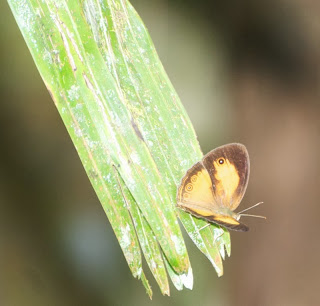


+DSC_7547.jpg)

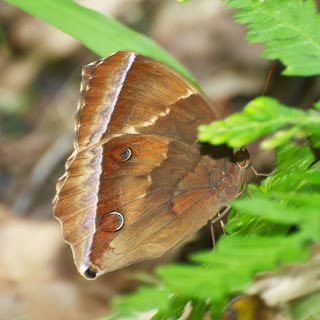



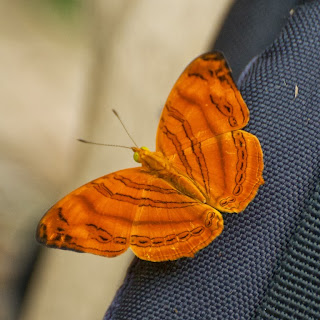
+DSC_7540.jpg)



















+DSC_7368.jpg)
+DSC_7374.jpg)
+DSC_7377.jpg)
++DSC_7431.jpg)
++DSC_7432.jpg)



+DSC_7424.jpg)
+DSC_7425.jpg)
+DSC_7420.jpg)
+DSC_7419.jpg)
+DSC_7426.jpg)
+DSC_7427.jpg)





+DSC_7451.jpg)
+DSC_7457.jpg)
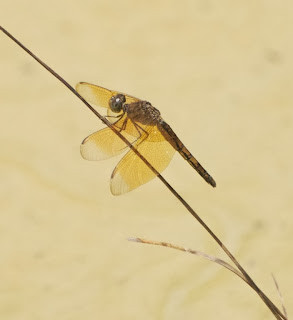
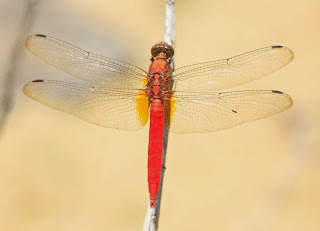
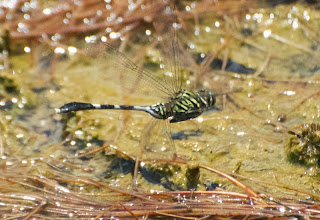


+DSC_7500.jpg)
+DSC_7502.jpg)
+DSC_7501.jpg)
+DSC_7494.jpg)
+DSC_7486.jpg)
+DSC_7497.jpg)

